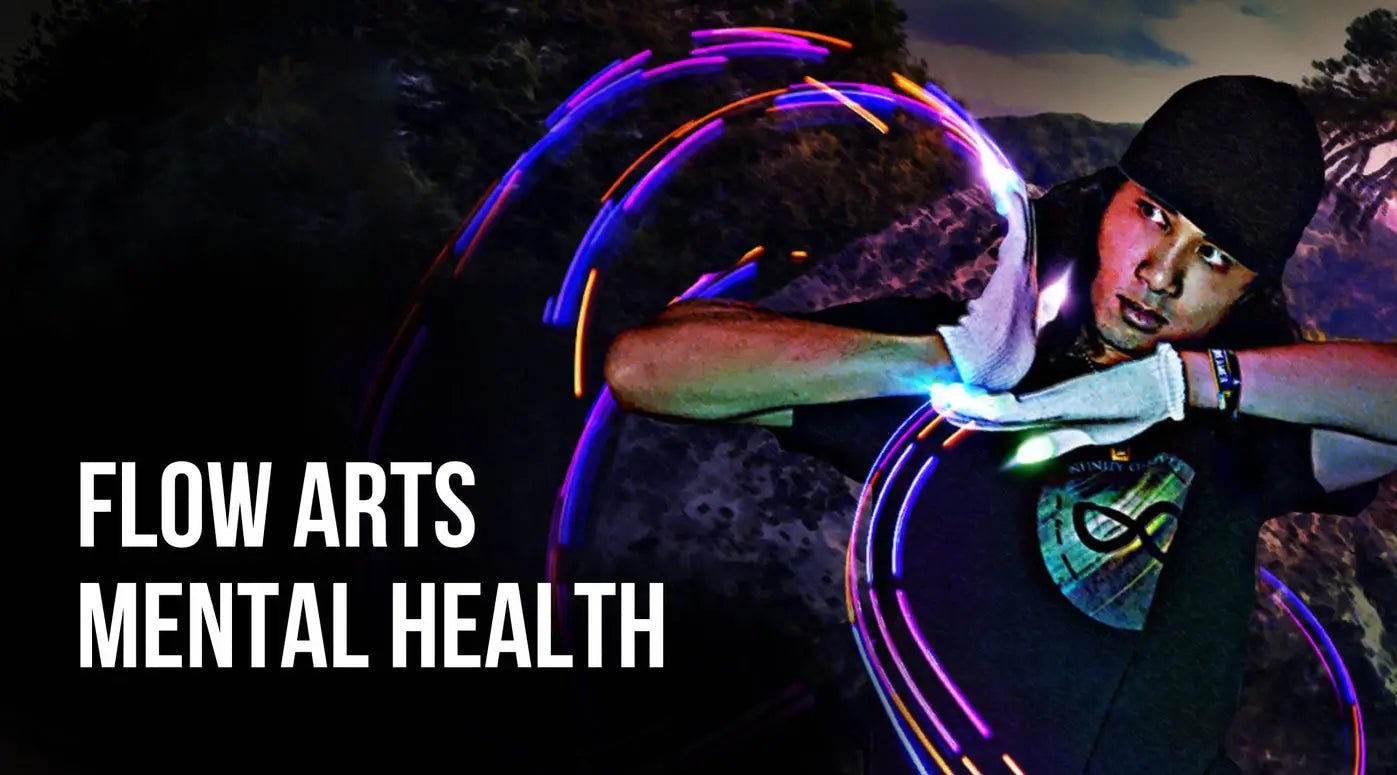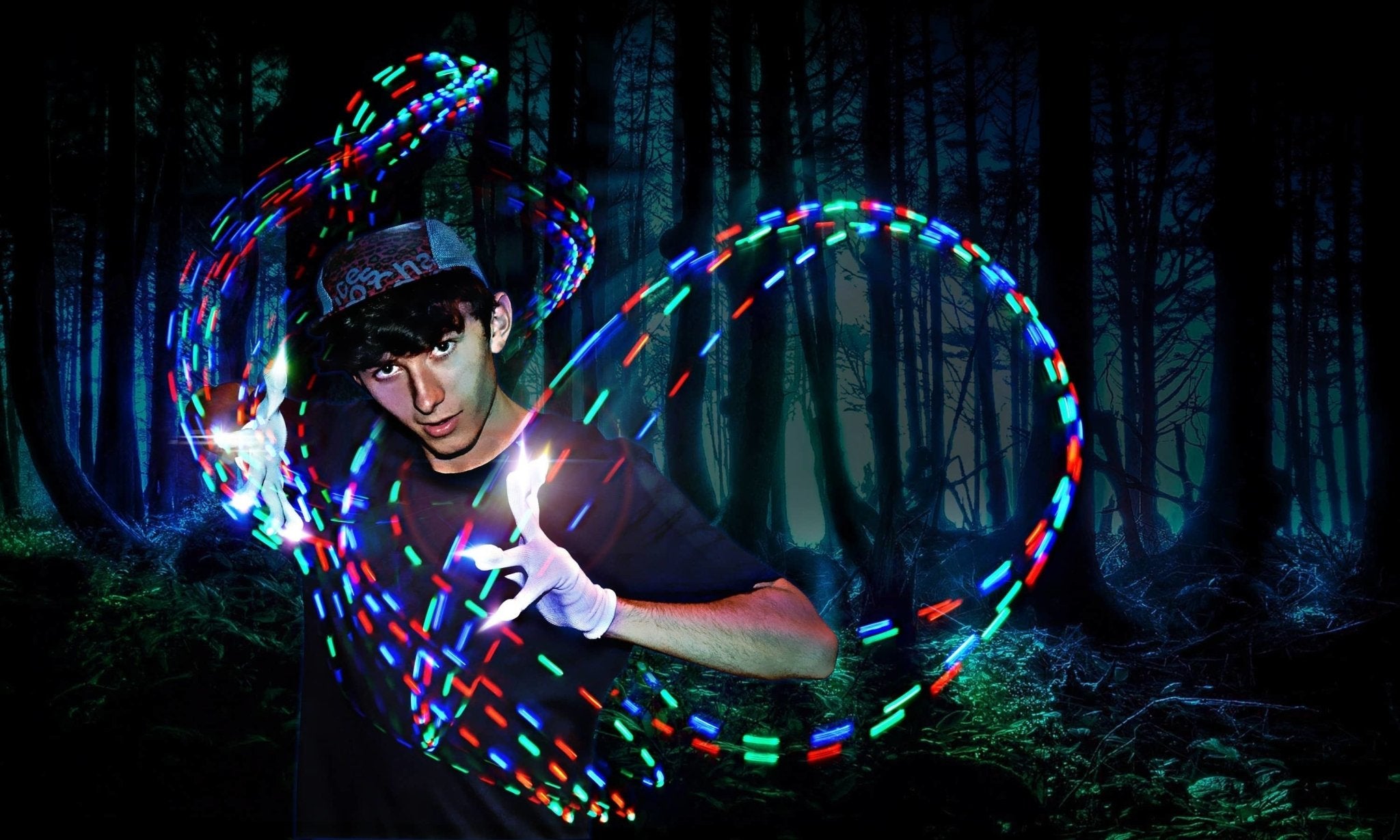As we mark #MentalHealthAwarenessMonth, it's important to acknowledge the profound impact that flow arts can have on enhancing mental health. For numerous individuals, flow arts serve as a haven and a creative outlet, establishing a tight-knit community of like-minded people who cherish self-expression and personal growth.
Tackling the Mental Health Crisis with the Healing Power of Flow Arts
Based on a 2017 CDC report, the United States experienced a staggering 47,000 suicides, the highest rate in fifty years. Mental illness will touch at least half of all American adults at some point in their lives. Issues like depression, anxiety, and other mental health challenges affect everyone, encouraging individuals to seek relief and recovery through therapy, medication, exercise, diet, relationships, and various forms of self-expression. Art, including the diverse world of flow arts, has risen as a potent and invaluable coping mechanism for mental health difficulties.
Diving into the Multifaceted Universe of Flow Arts
Flow arts incorporate a wide range of creative movement practices, each offering a wealth of therapeutic benefits. Some well-known flow arts are:
- Gloving: A captivating form of dance that involves using LED gloves to create a light show.
- Leviwand: A flow art that creates the illusion of a vertical wand floating or dancing around the performer.
- Hooping: Combines dance and hula hoop manipulation to achieve smooth, rhythmic motion.
- Poi Spinning: A performance art that involves swinging tethered weights, often with glowing lights, in various patterns and sequences.
Each flow art presents a powerful medium for personal growth, self-discovery, skill development and connecting with a supportive community.
Expressing Emotions through Dance and Movement
Dance and creative movement—including flow arts—serve as effective ways to communicate emotions when words fall short. Engaging in flow arts like gloving, orbiting, hooping, or poi spinning can trigger feel-good chemicals in the brain, assist in processing intricate emotions, and offer a meditative refuge from negative thoughts. Flow arts also nurture self-confidence, strength, and agility as individuals refine their artistic abilities.
The Vital Role of Community in Flow Arts
Community holds a fundamental place in flow arts. The flow arts community thrives on relationships and offers a judgment-free environment for people to be themselves. Flow festivals around the globe create chances to learn, teach, compete, and bond with others passionate about flow arts. This shared experience can resemble group therapy as individuals focus on personal growth and connection on artistic and emotional levels.
Decoding the Science of Flow State and Mental Health
The term "flow" within flow arts alludes to a mental state in which a person becomes fully absorbed in an activity, experiencing energized concentration and joy. Research has shown that achieving a flow state produces multiple psychological benefits, such as reduced stress, increased happiness, and improved overall well-being. Engaging in flow arts can allow individuals to tap into this formidable mental state, thus fostering a healthier mindset and enhanced mental health.
The Life-changing Influence of Flow Arts on Mental Health
Countless individuals have found solace, healing, and personal development through practicing flow arts. For some, it serves as a method to manage anxiety and depression, while others find it useful in processing trauma or grief. By sharing their narratives, these individuals inspire others to investigate the potential benefits of flow arts in their mental health journey.
Organizations and Resources Promoting Flow Arts for Mental Health
Various organizations and online resources endorse the use of flow arts for mental health and well-being. These platforms provide educational content, tutorials, and encouraging communities to help individuals explore and benefit from flow arts. Examples include the Flow Arts Institute, Flowtoys, and numerous social media groups devoted to specific flow arts practices.
Advice for Newcomers: Choosing the Right Flow Art and Making Progress
If you're new to flow arts, consider these tips to get started:
- Investigate different types of flow arts to find the one that truly resonates with you.
- Seek local classes, meetups, or online tutorials to learn the basics.
- Be patient and permit yourself time to grow, as mastering a flow art requires dedication and practice.
- Connect with others in the flow arts community for support, motivation, and inspiration.
Embrace the Flow Arts Community for Mental Health Awareness Month
If you're struggling to find happiness or going through a challenging time, think about embracing flow arts as a way to cope, make new friends, and develop new skills. In the flow arts family, we accept everyone, regardless of background or lifestyle. Pick up a flow toy and join our family during #MentalHealthAwarenessMonth!
In life's darkest moments, we shine brightest in our flow ❤️
Immerse Yourself in the World of Flow Arts & Light Shows
FAQs
-
Are flow arts suitable for beginners with no prior experience?
Absolutely! Flow arts are accessible to people of all skill levels and backgrounds, with practice options catering to every individual's experience and comfort. -
Can I incorporate multiple flow art forms into my practice?
Definitely! Many flow artists enjoy blending elements from various practices, creating a unique and diverse fusion of art forms. -
Do I need to be physically fit to start practicing flow arts?
No, you don't need to be in peak physical condition to begin practicing flow arts. Many flow art forms can be adapted to accommodate different abilities and fitness levels while providing a wide range of benefits. -
Are there any age restrictions for practicing flow arts?
Flow arts can be enjoyed by people of all ages, making them an inclusive and accessible means of self-expression and personal growth for everyone. -
How do I establish connections within the flow arts community?
Attending local workshops, classes, and festivals is a great way to meet fellow flow artists and forge relationships in a supportive and welcoming environment. Online forums, social media groups, and discussion boards also offer ample opportunities for networking and engagement within the flow art community.




1 comment
Robert Austin
In ones Flow of Light , you are the light in the darkness ✨☀️💫💛
Leave a comment
This site is protected by hCaptcha and the hCaptcha Privacy Policy and Terms of Service apply.